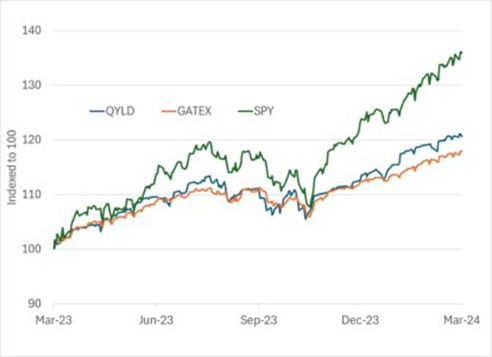In the investment world, you can find mutual funds and ETFs for pretty much every investment strategy you can think of. There are even funds that use option trading as a selling point. One example is the Recon Capital Nasdaq-100 Covered Call ETF (QYLD). The extra return is nice, of course, but there are also potential downside risks, notes Scott Chan, editor of The Complete Investor.
To be clear, option-trading funds still hold mostly stocks and ETFs. The difference from normal equity-only funds is that they also sell options using strategies such as covered calls, short straddles, and short strangles. By doing this, these funds squeeze more income out of their existing positions.
Selling options usually works best when the underlying securities do not move a lot. And in the case of these funds that sell covered calls, they work best when the market is neutral or slightly bearish.
When you sell calls, for example, you don’t want the underlying stock to go up enough to be in the money, in which case the stock would be called away at the strike price. Since a call won’t be exercised unless the strike price is lower than the market price, when a stock is called away, you are effectively selling the stock at a below-market price. Or you have to close your short position at a loss.
Similarly, when you short a straddle or strangle, you want volatility to be low. Best case scenario is when both legs of the straddle or strangle expire worthless. The more in the money either the call or put becomes, the less profitable the trade becomes, and likely, the bigger the loss.
The chart here compares the performances of the QYLD and The Gateway Fund (GATEX), a mutual fund that follows a similar strategy, against the SPDR S&P 500 ETF (SPY). As you can see, over the past year, the two funds have significantly underperformed the S&P.

Since the S&P 500 was up a lot over that period, someone who invested in one of these funds would have been better off just going with a fund that’s purely long stocks. Notice that when the market was falling in September and October, the two funds closed the gap. As mentioned earlier, these funds tend to outperform when the market is neutral or slightly bearish.

















